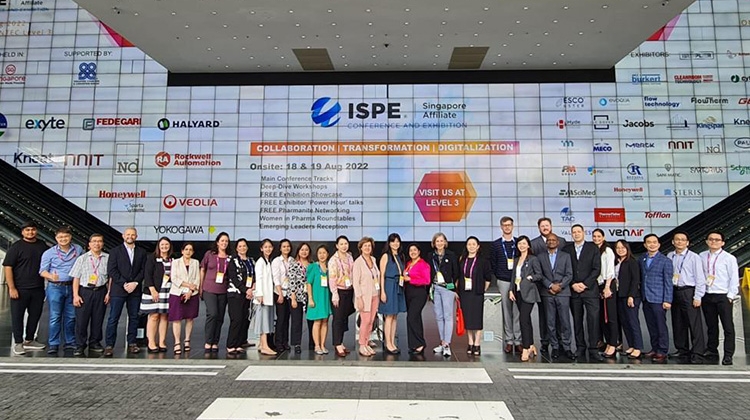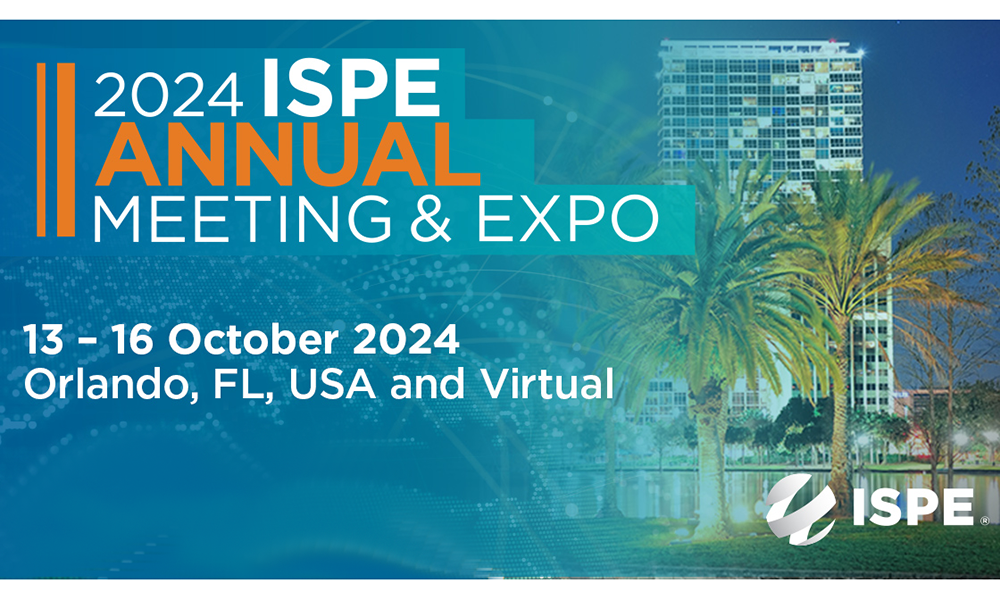ASEAN Regulatory Roundtable: The Future of Pharmaceutical Inspections

The 2022 ISPE Singapore Affiliate Conference & Exhibition featured a regulatory roundtable discussion on the Future of Pharmaceutical Inspections.
The regulators included:
Will Remote/Distant Inspections Continue?
The panelists were asked whether remote or distant inspections would continue, or would they now be done in hybrid form, i.e., remote inspection plus on-site inspection?
Joey Gouws indicated that most GMP inspectors agree that a full remote or distant inspection can never replace an on-site inspection. There are too many variables that an on-site inspection is able to identify which cannot be identified during a full remote/distant inspection. However, it is now common practice for regulatory authorities around the world to conduct hybrid inspections, and it was her opinion that this would grow in the future.
She said that even for verifying CAPAs after an on-site inspection it was now common for an inspection team to verify corrective actions remotely instead of going back on-site, particularly as the inspection team were familiar with the site from their on-site visit. However, remote/distant inspections would not be used for inspections of new facilities, new technologies or new products being introduced.
Sia Chong Hock agreed with Joey and said that most GMP inspectors are of the opinion that an on-site inspection is the gold standard of GMP inspections. He said that although inspectors now had a lot of experience with remote/distant inspections during the pandemic, there were still some challenges, e.g.,
- Poor internet connectivity.
- Poor resolution of the microphone and/or web camera.
- Time zone differences.
- Inability to observe body language and/or facial expressions.
- Inability to inspect higher risk areas such as cleanrooms, computerized systems, etc.
He said that despite these challenges, we have come a long way in using inspection tools remotely and that there was definitely a place for remote/distant inspections in hybrid form. He indicated that some of the advantages of the hybrid inspection approach were:
- Less travel time for both domestic and overseas inspections.
- Reduced time on-site.
- More flexible approach to the inspection, with the option of splitting a one-week inspection into 2 days on-site and 3 days remote.
- Cost savings for both the Inspectorate and for industry.
Sia concluded by saying that he believed that the future of hybrid inspections is bright.
Nasrul Noor also agreed with the other panelists and said that hybrid inspections were likely to continue. However, NPRA Malaysia had resumed doing full on-site inspections for overseas sites as this approach was best for detecting body language signals, smells, etc.
Joey Gouws said that a type of hybrid inspection undertaken by WHO was to involve a local inspector of the country in which the WHO inspection was being undertaken, and to arrange for that inspector to go back on-site to follow-up on CAPAs and to verify the suitability of corrective actions. One advantage for the local inspector is that it provided that inspector and the Inspectorate with training and capacity building due to their participation in the initial inspection.
Sia Chong Hock added that we should not forget the positive role of distant/remote inspections during the pandemic, which had enabled manufacturers to continue operating.
Asked to comment on industry best practices for distant/remote inspection, Joey Gouws said that the most important ones were:
- WiFi strength and connectivity, and pre-inspection preparations meetings to test this. It was important to check all parts of the facility to ensure there were no connection dead spots, especially in warehouses and cleanrooms.
- Have all requested documents ready and easily accessible.
- Have good translators who were familiar with the technical terms likely to be used during the remote/distant inspection.
Regulatory Reliance:
With regulatory reliance and inspection reliance becoming more prominent in recent years, the panelists were asked to comment on two recent initiatives that promote regulatory reliance – the Access Consortium and an EMA Working Group on the sharing of GMP inspection information.
Sia Chong Hock indicated that membership of the Access Consortium included the TGA (Australia), Health Canada (Canada), HSA (Singapore), Swiss Medic (Switzerland) & MHRA (UK), all of which had comparable regulatory systems in place. The aim of the Consortium is to reduce duplication through work sharing arrangements. This consortium had recently set up a Working Group on APIs and a Working Group on Generic Products.
The Consortium had recently undertaken a shared assessment of a new product (Vabysmo®) used in the treatment of aged macular degeneration (AMD) and diabetic macular edema (DME). Product data had been submitted to all five Consortium members at the same time, with the assessment work divided up amongst the members. Questions arising from the assessments were collated and submitted to the applicant as one set of questions.
Joey Gouws indicated that WHO participated in a number of collaborative initiatives. One of the most important was the rationalization of GMP inspections under the EMA’s inspection information sharing initiative. Regulatory authorities participating in this initiative included EMA, US FDA, TGA, Health Canada and WHO. She said this group meets monthly and looks at the GMP status of specific manufacturing facilities and where and when specific GMP inspections are to take place in the near future, with a view to arranging joint inspections where possible.
Sia Chong Hock indicated that the International Coalition of Medicines Regulatory Authorities (ICMRA) had recently announced that it would commence a 12-month pilot program of Collaborative Hybrid Inspections. He is of the understanding that the regulatory authorities that would participate in the pilot program would include the EMA, US FDA, MHRA (UK), ANVISA (Brazil) and PMDA/MHLW (Japan), with the scope of the pilot limited to pre-approval and pre-licensing medicine inspections but would not include surveillance medicine inspections.
The aim of the pilot was to gain information on how to prepare, execute and report a collaborative hybrid inspection. He said that the learnings from the pilot program could result in the scope of collaborative hybrid inspections being increased and other regulatory authorities invited to participate in an expanded program.
Future Inspection Tools
The panelists were asked to imagine what inspection tools were likely to be used in the future.
Joey Gouws indicated that we are all now quite familiar with Teams and Zoom, although two years ago few of us knew that these platforms existed. Further advances in technology could see various new platforms and new inspection tools emerge in the future. She described other technologies such as smart glasses and robotics that would relay images to remotely located inspectors that may be possible in the future.
Nasrul Noor said that whatever tool was used for remote inspections it was important for the manufacturer undergoing the remote inspection to have in place adequate infrastructure regarding information technology. Also, the manufacturer should use a stabilizing tool to enable a remote view of production areas as staff walk around the facility. He indicated that it takes time for GMP inspectors to adapt to new technologies and new approaches used for remote/distant inspections.
Sia Chong Hock added that he is a digital migrant (and not a digital citizen or digital native) and had to adapt to new digital technologies and new inspection tools in recent years. He recalled that his tool set in the early days of his inspection career comprised an analogue camera, measuring tape, ruler, torch light, goggles and aide memoire. Other than the aide memoire, inspectors no longer carry the old analogue toolbox anymore as they have moved into the digital era. However, he added that HSA inspectors are not likely to be using wearable cameras of using robotics in the foreseeable future.
Joey Gouws indicated that it was not possible for GMP inspectors to have expertise in all technical areas, particularly when it comes to sophisticated technologies. Therefore, WHO usually takes technical experts on GMP inspections depending on the type of inspection to be carried out. Usually, these technical experts were WHO-appointed drug assessors who had been involved in the assessment of the drug product dossier. She added that industry could help by exposing GMP inspectors to new technologies in a training environment, even via remote learning.
Nasrul Noor added that drug assessors can participate in NPRA’s GMP inspections, but their role on the inspection team must be clearly defined.
The panel was asked whether it was likely that machines would eventually take over drug product approvals, GMP inspections, etc.
Sia Chong Hock said that this sort of question, which related to Artificial Intelligence (AI), applied to all areas of industry worldwide, not just the pharmaceutical industry. He said that whilst there will be an increasing role for AI in the pharmaceutical industry and for pharmaceutical regulators, soft skills and emotional quotients (EQs) such as judgement, reasoning and imagination will always be needed due to the current limitations of AI. The limitations of remote/distant inspections in detecting facial expressions, gestures, body language, etc., have also emphasized the importance of such soft skills and EQs.
Other General Questions
The panel was asked about some of the challenges that inspectors had found when inspecting manufacturers of mRNA vaccines or cell-based medicines. Joey Gouws indicated that due to their complexity, WHO would usually carry out on-site inspections of these medicines rather than remote/distant inspection.
The panel was asked to comment on the differences between the WHO GMP Guide and the PIC/S GMP Guide, and when these differences will be harmonized. Joey Gouws indicated that there was no difference between the two GMPs; they both addressed the same principles. The WHO GMP does however give expanded explanations on specific areas in order to assist industry and regulators in low- and middle-income countries.
Disclaimer
This is an informal synopsis of presentation made at the ISPE Singapore Affiliate Conference in Singapore on 18 August 2022. It has not been vetted by any of the agencies or regulators cited in this article.






